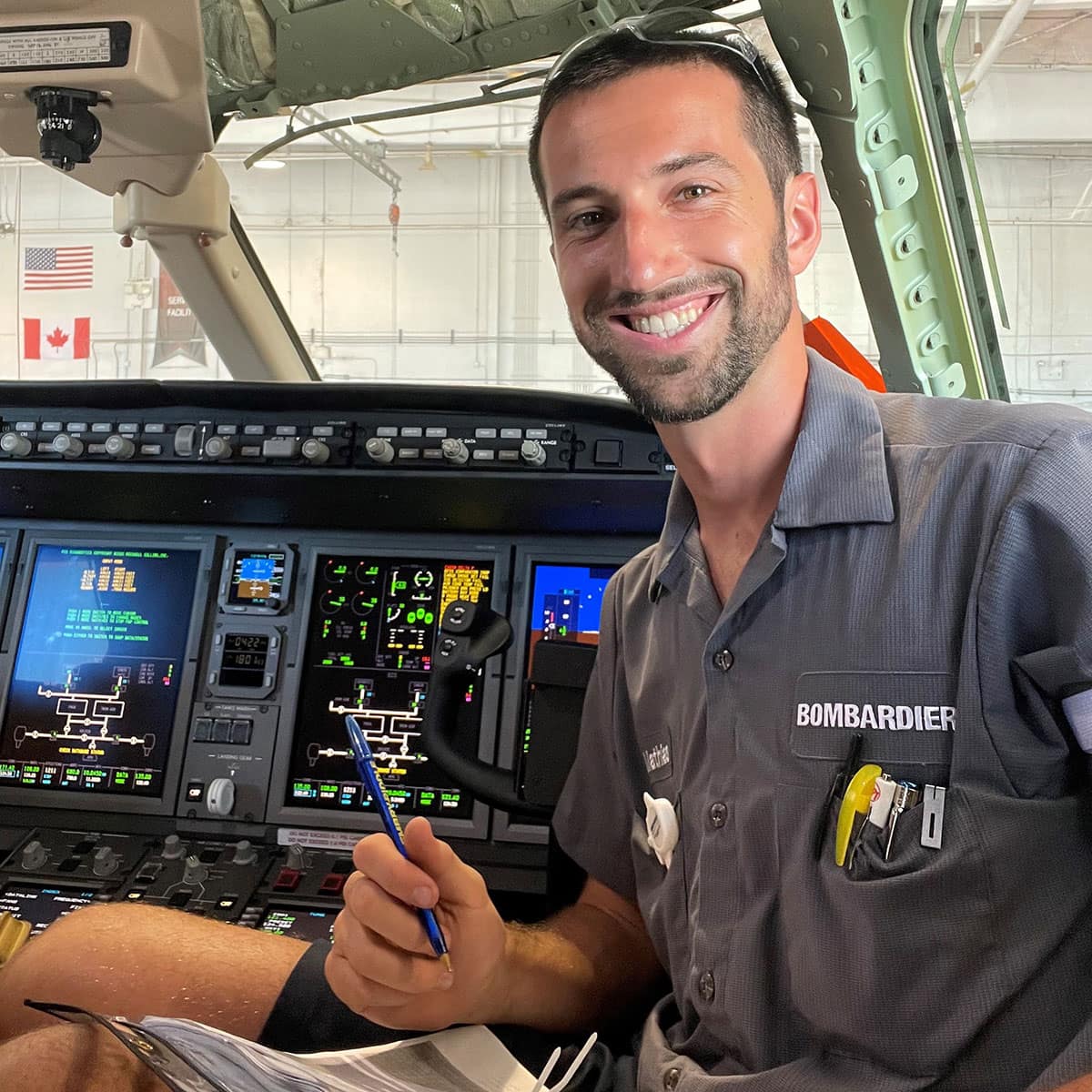Job Demand is Sky-High for Aviation Maintenance Grads

Immediately after graduating in May with a degree in Aviation Maintenance Science, Mathias Berdugo started a job as an avionics and A&P (airframe and power plant) technician for Bombardier, having chosen the position from among multiple job offers. The gig included “very generous” assistance for his relocation as well as a great employment package “with many good benefits,” said the Embry-Riddle Aeronautical University alumnus.
“I am absolutely loving it so far,” said Berdugo. “The people are absolutely amazing. They have shared so much knowledge with me and want to see me grow with the company.”
Berdugo’s situation is just one illustration of how high demand for aviation maintenance technicians is providing exceptional opportunity to graduates with degrees in the field.
At a David B. O'Maley College of Business panel discussion held at Embry-Riddle during the spring 2022 semester, top executives from several aviation companies brought up the industry’s enormous need for — and willingness to offer high salaries to — maintenance technicians.
“For those of you who want to become an aircraft maintenance technician, and you’re qualified and certified, you can almost name your price,” said Steve Boecker, sales executive in Maintenance, Repair and Overhaul at Delta TechOps, speaking to an auditorium of Embry-Riddle students.
Many factors have increased the demand for aviation maintenance workers, including the retirement of a large proportion of the industry’s workforce, a slowed pipeline of trained candidates from the military and corporate buyouts that occurred at the beginning of the Covid-19 pandemic in 2020. Increased repair of older aircraft, compounded by supply chain and geopolitical slowdowns on the production of new aircraft, has also raised demand for more technicians.
For those of you who want to become an aircraft maintenance technician, and you’re qualified and certified, you can almost name your price.
According to the Boeing Pilot and Technician Outlook, approximately 626,000 new aviation maintenance technicians will be needed by 2040. The U.S. Bureau of Labor Statistics puts the projected growth in the number of jobs for aircraft and avionics equipment mechanics and technicians at 11 percent between 2020 and 2030, whereas the average growth for all occupations is eight percent.
Rick Hale, chairman and CEO of Winner Aviation Corporation, said the industry has been working to actively court aviation maintenance technicians — and to do so in new and interesting ways.
“We’ve had to get pretty creative in how we go after (them),” Hale said. “The segment is offering a lot of perks right now to (students) just coming out of school, with signing bonuses, tool chests and tools being offered, and other perks in the way of training.”
Charles Horning, associate professor in Embry-Riddle’s Department of Aviation Maintenance Science, said he has never before seen such opportunity in the field. When he graduated from Embry-Riddle in 1986, he said, students in the department had a choice of working in general aviation or the airlines. Now, Horning said, opportunities have also bloomed in corporate aviation, uncrewed aircraft systems and the space industry.
“Every one of these areas is hiring,” Horning said. “The gamut of choices that grads have is amazing.”
Updated Regulations Open Door Even Wider
Meanwhile, the Federal Aviation Administration (FAA) is updating its regulations related to aviation maintenance training, with new rules coming into effect in September.
Those new rules, Horning said, will allow schools to incorporate more simulation, virtual reality and augmented reality formats into students’ training. While Horning says such methods can’t completely replace more traditional hands-on learning, they can enrich a student’s overall experience.
“All of these avenues open up that can enhance the students’ understanding of a subject and help them to grasp that material faster,” he said. “With the new FAA rules, we’re going to have a lot more freedom in choosing the correct mode of learning delivery. Students today have so many opportunities. It’s just phenomenal.”

 Michaela Jarvis
Michaela Jarvis